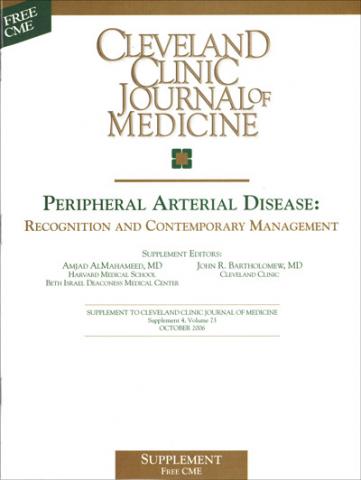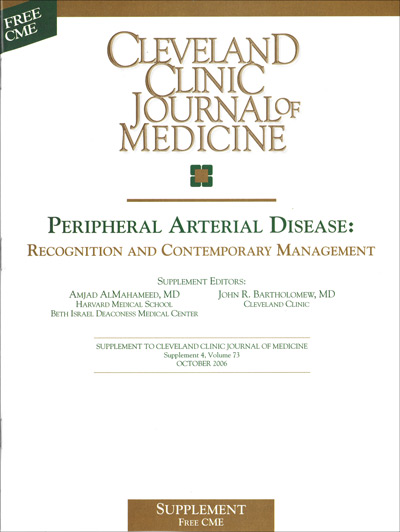User login
The uric acid hypothesis: Out with the old, in with the. . .old
Role of uric acid in hypertension, renal disease, and metabolic syndrome
Waving in a New Era of Hand Transplant Success
BOSTON — Long-term outcomes of hand transplant patients show that recipients can have good graft functionality and quality of life if they comply with immunosuppressive regimens, according to speakers at the 2006 World Transplant Congress.
Worldwide experience with hand transplants now includes 24 hands in 18 patients with “excellent results,” said Dr. Suzanne T. Ildstad, director of the Institute for Cellular Therapeutics at the University of Louisville (Ky.).
Patients are reluctant to undertake a hand transplant “until we modify or reduce the intensity of immunosuppression,” said Dr. Ildstad. “There are discussions right now with our group and other groups of using steroid-sparing protocols as well as attempts to induce tolerance,” she noted.
Dr. Ildstad presented the 7-year results of a 37-year-old, left-hand-dominant man (patient No. 1, currently the recipient of the longest-surviving hand transplant in the world) and the 4-year results of a 36-year-old, right-hand-dominant man (patient No. 2). Both men lost their left hands in fireworks accidents.
On measurements with the United Kingdom Medical Research Council strength scale, patient No. 1 had an excellent return of function of intrinsic muscles whereas patient No. 2 had an improved, but somewhat delayed, return of function because of a period of noncompliance with his immunosuppressive regimen.
Sensation gradually improved in patient No. 1 to the point where it has become “essentially normal” after 7 years of follow-up, Dr. Ildstad said. Patient No. 2 also experienced gradual improvement in sensation, but it was slightly delayed in comparison with patient No. 1.
In skin biopsy specimens from both patients, low-grade cellular infiltrates have been detected. The patients did not have rejections treated unless they were severe, she said.
When patient No. 2 decided to stop taking his immunosuppressive medications, he subsequently had a grade 3 rejection episode that was “relatively readily reversed” with antithymocyte globulins (Thymoglobulin), increased doses of tacrolimus (Prograf), and corticosteroid boluses, which is contrary to what Dr. Ildstad and many transplant immunologists would have predicted because of the presumed antigenicity of the skin.
In a study of two men who received bilateral hand transplants, improvement in function was accompanied by changes in brain function and good quality of life, reported Dr. Palmina Petruzzo of the department of transplantation at Hôpital Edouard Herriot, Lyon, France.
Functional MRI shows that the patients' representation of their hands in their brains progressively shifted from lateral to medial regions of the motor cortex.
By 2 years following transplantation, hand motor coordination had improved in both patients to the point where they could perform complex movements involving intersegmental coordination, which were assessed while the patients wore a CyberGlove containing 22 sensors that monitor hand movement, according to Dr. Ildstad.
A recipient of a transplant of a left hand demonstrated his manual dexterity and control by tying his shoe at his 4-year checkup. Courtesy Jewish Hospital/Kleinert, Kutz and Associates Hand Care Center/University of Louisville
BOSTON — Long-term outcomes of hand transplant patients show that recipients can have good graft functionality and quality of life if they comply with immunosuppressive regimens, according to speakers at the 2006 World Transplant Congress.
Worldwide experience with hand transplants now includes 24 hands in 18 patients with “excellent results,” said Dr. Suzanne T. Ildstad, director of the Institute for Cellular Therapeutics at the University of Louisville (Ky.).
Patients are reluctant to undertake a hand transplant “until we modify or reduce the intensity of immunosuppression,” said Dr. Ildstad. “There are discussions right now with our group and other groups of using steroid-sparing protocols as well as attempts to induce tolerance,” she noted.
Dr. Ildstad presented the 7-year results of a 37-year-old, left-hand-dominant man (patient No. 1, currently the recipient of the longest-surviving hand transplant in the world) and the 4-year results of a 36-year-old, right-hand-dominant man (patient No. 2). Both men lost their left hands in fireworks accidents.
On measurements with the United Kingdom Medical Research Council strength scale, patient No. 1 had an excellent return of function of intrinsic muscles whereas patient No. 2 had an improved, but somewhat delayed, return of function because of a period of noncompliance with his immunosuppressive regimen.
Sensation gradually improved in patient No. 1 to the point where it has become “essentially normal” after 7 years of follow-up, Dr. Ildstad said. Patient No. 2 also experienced gradual improvement in sensation, but it was slightly delayed in comparison with patient No. 1.
In skin biopsy specimens from both patients, low-grade cellular infiltrates have been detected. The patients did not have rejections treated unless they were severe, she said.
When patient No. 2 decided to stop taking his immunosuppressive medications, he subsequently had a grade 3 rejection episode that was “relatively readily reversed” with antithymocyte globulins (Thymoglobulin), increased doses of tacrolimus (Prograf), and corticosteroid boluses, which is contrary to what Dr. Ildstad and many transplant immunologists would have predicted because of the presumed antigenicity of the skin.
In a study of two men who received bilateral hand transplants, improvement in function was accompanied by changes in brain function and good quality of life, reported Dr. Palmina Petruzzo of the department of transplantation at Hôpital Edouard Herriot, Lyon, France.
Functional MRI shows that the patients' representation of their hands in their brains progressively shifted from lateral to medial regions of the motor cortex.
By 2 years following transplantation, hand motor coordination had improved in both patients to the point where they could perform complex movements involving intersegmental coordination, which were assessed while the patients wore a CyberGlove containing 22 sensors that monitor hand movement, according to Dr. Ildstad.
A recipient of a transplant of a left hand demonstrated his manual dexterity and control by tying his shoe at his 4-year checkup. Courtesy Jewish Hospital/Kleinert, Kutz and Associates Hand Care Center/University of Louisville
BOSTON — Long-term outcomes of hand transplant patients show that recipients can have good graft functionality and quality of life if they comply with immunosuppressive regimens, according to speakers at the 2006 World Transplant Congress.
Worldwide experience with hand transplants now includes 24 hands in 18 patients with “excellent results,” said Dr. Suzanne T. Ildstad, director of the Institute for Cellular Therapeutics at the University of Louisville (Ky.).
Patients are reluctant to undertake a hand transplant “until we modify or reduce the intensity of immunosuppression,” said Dr. Ildstad. “There are discussions right now with our group and other groups of using steroid-sparing protocols as well as attempts to induce tolerance,” she noted.
Dr. Ildstad presented the 7-year results of a 37-year-old, left-hand-dominant man (patient No. 1, currently the recipient of the longest-surviving hand transplant in the world) and the 4-year results of a 36-year-old, right-hand-dominant man (patient No. 2). Both men lost their left hands in fireworks accidents.
On measurements with the United Kingdom Medical Research Council strength scale, patient No. 1 had an excellent return of function of intrinsic muscles whereas patient No. 2 had an improved, but somewhat delayed, return of function because of a period of noncompliance with his immunosuppressive regimen.
Sensation gradually improved in patient No. 1 to the point where it has become “essentially normal” after 7 years of follow-up, Dr. Ildstad said. Patient No. 2 also experienced gradual improvement in sensation, but it was slightly delayed in comparison with patient No. 1.
In skin biopsy specimens from both patients, low-grade cellular infiltrates have been detected. The patients did not have rejections treated unless they were severe, she said.
When patient No. 2 decided to stop taking his immunosuppressive medications, he subsequently had a grade 3 rejection episode that was “relatively readily reversed” with antithymocyte globulins (Thymoglobulin), increased doses of tacrolimus (Prograf), and corticosteroid boluses, which is contrary to what Dr. Ildstad and many transplant immunologists would have predicted because of the presumed antigenicity of the skin.
In a study of two men who received bilateral hand transplants, improvement in function was accompanied by changes in brain function and good quality of life, reported Dr. Palmina Petruzzo of the department of transplantation at Hôpital Edouard Herriot, Lyon, France.
Functional MRI shows that the patients' representation of their hands in their brains progressively shifted from lateral to medial regions of the motor cortex.
By 2 years following transplantation, hand motor coordination had improved in both patients to the point where they could perform complex movements involving intersegmental coordination, which were assessed while the patients wore a CyberGlove containing 22 sensors that monitor hand movement, according to Dr. Ildstad.
A recipient of a transplant of a left hand demonstrated his manual dexterity and control by tying his shoe at his 4-year checkup. Courtesy Jewish Hospital/Kleinert, Kutz and Associates Hand Care Center/University of Louisville
Peripheral Arterial Disease
Supplement Editors:
Amjad AlMahameed, MD, and John R. Bartholomew, MD
Contents
The magnitude of the problem of peripheral arterial disease: Epidemiology and clinical significance
Mary McGrae McDermott, MD
Pathophysiology of peripheral arterial disease and risk factors for its development
John R. Bartholomew, MD, and Jeffrey W. Olin, DO
The clinical presentation of peripheral arterial disease and guidance for early recognition
Sean P. Lyden, MD, and Douglas Joseph, DO
Noninvasive diagnostic strategies for peripheral arterial disease
Susan M. Begelman, MD, and Michael R. Jaff, DO
Contemporary management of peripheral arterial disease: I. Cardiovascular risk-factor modification
Heather L. Gornik, MD, MHS, and Mark A. Creager, MD
Contemporary management of peripheral arterial disease: II. Improving walking distance and quality of life
Teresa L. Carman, MD, and Bernardo B. Fernandez, Jr., MD
Contemporary management of peripheral arterial disease: III. Endovascular and surgical management
Amjad AlMahameed, MD, MPH, FACP, and Deepak L. Bhatt, MD, FACC, FSCAI, FESC, FACP
Supplement Editors:
Amjad AlMahameed, MD, and John R. Bartholomew, MD
Contents
The magnitude of the problem of peripheral arterial disease: Epidemiology and clinical significance
Mary McGrae McDermott, MD
Pathophysiology of peripheral arterial disease and risk factors for its development
John R. Bartholomew, MD, and Jeffrey W. Olin, DO
The clinical presentation of peripheral arterial disease and guidance for early recognition
Sean P. Lyden, MD, and Douglas Joseph, DO
Noninvasive diagnostic strategies for peripheral arterial disease
Susan M. Begelman, MD, and Michael R. Jaff, DO
Contemporary management of peripheral arterial disease: I. Cardiovascular risk-factor modification
Heather L. Gornik, MD, MHS, and Mark A. Creager, MD
Contemporary management of peripheral arterial disease: II. Improving walking distance and quality of life
Teresa L. Carman, MD, and Bernardo B. Fernandez, Jr., MD
Contemporary management of peripheral arterial disease: III. Endovascular and surgical management
Amjad AlMahameed, MD, MPH, FACP, and Deepak L. Bhatt, MD, FACC, FSCAI, FESC, FACP
Supplement Editors:
Amjad AlMahameed, MD, and John R. Bartholomew, MD
Contents
The magnitude of the problem of peripheral arterial disease: Epidemiology and clinical significance
Mary McGrae McDermott, MD
Pathophysiology of peripheral arterial disease and risk factors for its development
John R. Bartholomew, MD, and Jeffrey W. Olin, DO
The clinical presentation of peripheral arterial disease and guidance for early recognition
Sean P. Lyden, MD, and Douglas Joseph, DO
Noninvasive diagnostic strategies for peripheral arterial disease
Susan M. Begelman, MD, and Michael R. Jaff, DO
Contemporary management of peripheral arterial disease: I. Cardiovascular risk-factor modification
Heather L. Gornik, MD, MHS, and Mark A. Creager, MD
Contemporary management of peripheral arterial disease: II. Improving walking distance and quality of life
Teresa L. Carman, MD, and Bernardo B. Fernandez, Jr., MD
Contemporary management of peripheral arterial disease: III. Endovascular and surgical management
Amjad AlMahameed, MD, MPH, FACP, and Deepak L. Bhatt, MD, FACC, FSCAI, FESC, FACP

